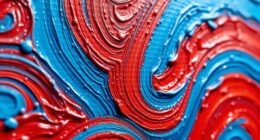To figure out your interior design style, start by exploring various aesthetics and evaluating your preferences. Take an interior design quiz to identify your unique style archetype. Create an inspiration board by collecting images, colors, and textures that resonate with you. Consider cultural influences and blend different design elements that reflect your personality. Don't hesitate to mix styles; it can lead to a cohesive and inviting space. If you're uncertain, collaborating with a professional designer can provide clarity. Keep experimenting, and you might discover even more about your taste and how to express it beautifully. When determining interior design style, remember to consider the functionality and practicality of the space. Your style should not only look good but also work for your lifestyle. Don’t be afraid to take risks and try new ideas, as your style may evolve over time. Trust your instincts and have fun with the process of creating a space that truly reflects who you are.
Key Takeaways
- Take an interior design quiz to identify your unique style archetype based on your lifestyle and preferences.
- Create a mood board with images, colors, and textures to visualize and clarify your design aesthetic.
- Assess your daily activities and personal preferences to inform your decor choices and style direction.
- Explore popular design styles and consider blending elements from different styles for a personalized touch.
- Work with a professional designer for expert guidance and to ensure a cohesive and functional design.
Take the Interior Design Quiz
If you've ever felt overwhelmed by the endless options in home decor, taking the Interior Design Quiz can be a game changer. This quiz is designed to help you find your design by answering a series of questions about your lifestyle, material preferences, and favorite furnishings.
By doing so, you'll uncover your unique home decor style, whether it's Bohemian, Glam, or Midcentury Modern.
Once you complete the quiz, the results reveal personalized style archetypes that guide your decorating choices. This tailored approach simplifies the decorating process, providing you with actionable steps and resources that align with your identified style.
You won't have to wade through countless options that don't resonate with you. Instead, you'll focus on pieces that truly reflect your preferences.
Additionally, you have the option to subscribe to a newsletter for ongoing design inspiration and updates. This keeps your creativity flowing and guarantees you stay connected to the latest trends and ideas.
Explore Popular Design Styles
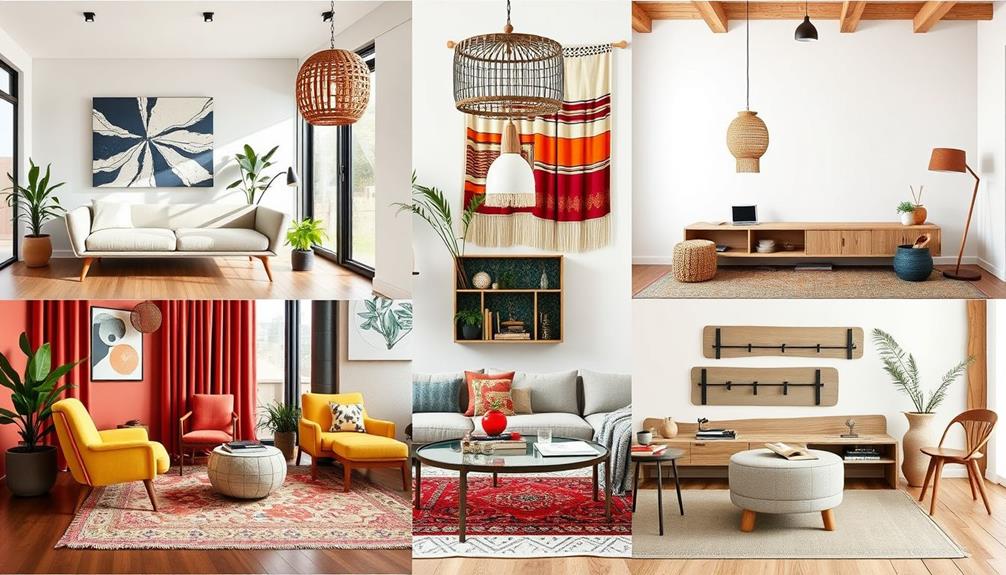
When exploring popular design styles, you'll notice each has its own key characteristics that can shape your space.
Don't hesitate to mix influences, as blending styles like modern farmhouse with coastal can lead to a unique expression of your personality.
Personalizing your choices will create an environment that truly feels like home to you.
Key Characteristics of Styles
Interior design styles can transform a space and reflect your personality, making it essential to understand their key characteristics.
Each design style showcases a unique style that can resonate with different aspects of your identity. Here's a quick overview to help you identify what speaks to you:
- Modern Style: Prioritizes simplicity with clean lines and a neutral color palette, focusing on functionality over embellishments.
- Traditional Style: Emphasizes structured pieces and symmetry, creating a formal atmosphere filled with history and elegance.
- Bohemian Style: Offers a layered and eclectic look, utilizing vibrant colors and natural elements for a relaxed ambiance filled with diverse textures.
- Glam Style: Features luxe textiles and jewel tones, presenting a minimal yet impactful design that exudes opulence.
- Industrial Style: Draws inspiration from factory aesthetics, incorporating raw materials and masculine elements in a neutral palette for an urban feel.
Blending Multiple Design Influences
Understanding key characteristics of various design styles opens the door to blending multiple influences in your own space. By thoughtfully combining elements, you can create a cohesive atmosphere that reflects your unique taste. Here are some popular combinations to inspire you:
| Design Style Pairing | Key Characteristics | Ideal Elements to Incorporate |
|---|---|---|
| Modern Farmhouse + Coastal | Warm and inviting, light and airy | Weathered wood, soft blues, and whites |
| Vintage + Contemporary | Curated and eclectic, showcasing history | Antique furniture with sleek modern pieces |
| Scandinavian + Mid-Century | Minimalist yet warm, functional and stylish | Soft textiles, organic shapes, and neutral tones |
Blending different styles allows you to draw from personal experiences, like travel or cultural heritage, making your space truly yours. For instance, mixing Scandinavian minimalism with mid-century modern warmth can create an inviting yet uncluttered environment. Embrace overlapping styles, and you'll find that a well-curated blend can enhance the overall aesthetic, making your home feel dynamic and visually interesting.
Personalizing Your Space Choices
Many people find that exploring popular design styles, like Modern, Traditional, Boho, and Glam, helps them discover elements that truly resonate with their personal aesthetic.
By understanding the characteristics of styles such as Coastal, Industrial, and Mid-Century Modern, you can blend these influences into a unique decor that reflects your personality.
For instance, incorporating elements from Modern Farmhouse, such as mixed textures and natural materials, can enhance your design and create a warm, inviting atmosphere.
Don't forget that many individuals possess a mix of styles, like combining Modern Farmhouse with Coastal elements, which can inspire creative and personalized design choices for your home.
To help you personalize your space, consider the following:
- Your cultural background and how it shapes your design choices.
- Travel experiences that inspire specific decor elements.
- Family heritage and its influence on your style preferences.
- Engaging with visual inspiration from Pinterest boards or design magazines.
- Experimenting with various textures, colors, and patterns to find what feels right.
Identify Your Personal Preferences

When it comes to identifying your personal preferences in interior design, start by evaluating your lifestyle and daily activities. Your functional needs play an essential role in shaping your design choices. Next, pay attention to the colors, textures, and patterns you're drawn to in your clothing and personal items; these often reflect your aesthetic inclinations.
Consider how various environments make you feel. Do certain styles calm you, energize you, or inspire you? Engaging in a design quiz can help you clarify your preferences and highlight decor styles that resonate with you.
To further refine your style, create a visual reference. Curate a Pinterest board or mood board showcasing spaces and decor that appeal to you. Look for recurring themes and styles.
Here's a quick summary of steps to find your style:
| Step | Action | Purpose |
|---|---|---|
| Assess Lifestyle | Evaluate daily activities | Determine functional needs |
| Note Preferences | Identify colors/textures/patterns | Reflect your aesthetic inclinations |
| Explore Resources | Take design quizzes | Clarify preferences |
Consider Cultural Influences
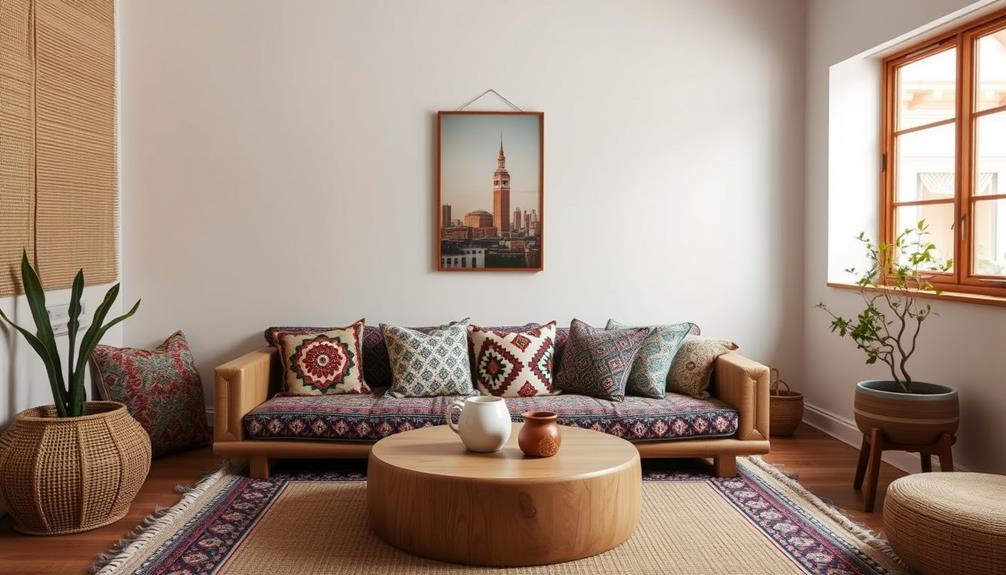
Cultural influences play an essential role in shaping your interior design style, reflecting the aesthetic values and traditions of your heritage. By embracing these influences, you can create a home that tells your unique story and showcases your personal design preferences.
Think about how elements like color palettes, materials, and patterns from your culture can enhance your home decor.
Consider incorporating aspects such as:
- Traditional textiles that add warmth and texture
- Color schemes inspired by your cultural background
- Art pieces that celebrate your heritage
- Furniture styles that reflect your cultural history
- Decorative motifs that tell a story or symbolize important values
Incorporating these elements not only personalizes your space but also deepens your emotional connection to it.
Exposure to different cultures through travel or community can also inspire fresh design choices, allowing you to blend styles for a distinctive look.
By understanding the historical context and symbolism behind certain design elements, you enhance the narrative of your home, creating a rich tapestry of your individuality and personal history.
Embrace cultural influences, and let them guide your journey to a uniquely styled space.
Blend Different Design Elements
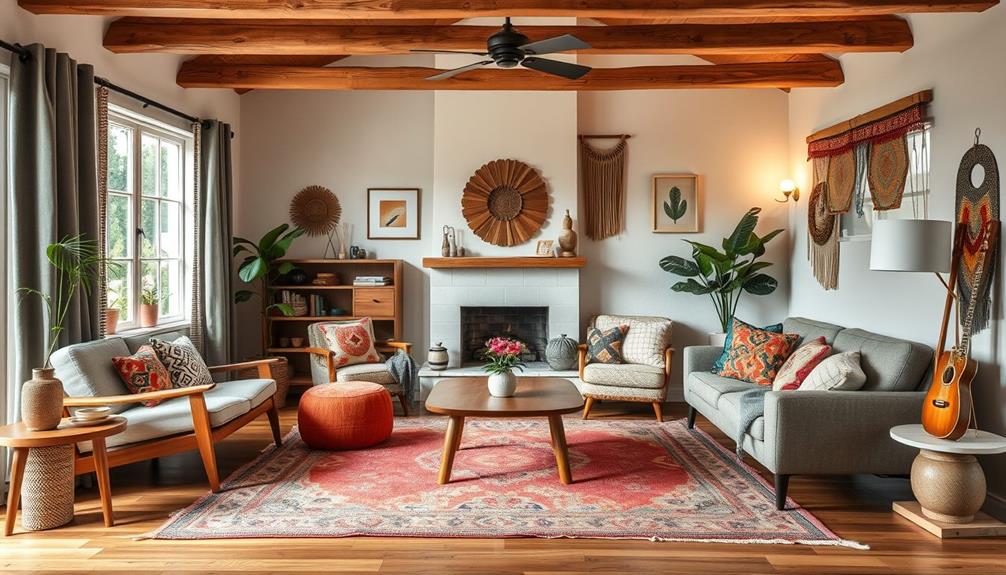
Blending different design elements lets you create a space that truly reflects your personality.
Consider incorporating inspiration from Mid-Century Modern Design to balance nostalgia with contemporary style, or draw from the serene atmosphere of a Modern Farmhouse Bedroom for a cozy feel.
Embrace eclectic combinations and discover your unique palette, mixing functional and aesthetic choices to enhance your home.
This approach not only showcases your individuality but also encourages creativity in your decor.
Embrace Eclectic Combinations
Eclectic combinations can transform your home into a vibrant reflection of your personality. By blending different design styles, you can curate a unique aesthetic that mirrors your tastes and experiences. Mixing vintage and contemporary pieces not only enhances your home's character but also keeps it visually interesting.
For instance, you could enhance time management visually by incorporating stylish wall clocks alongside your eclectic decor. Here are some ideas to help you create a cohesive style with eclectic combinations:
- Pair modern farmhouse furniture with coastal decor for a fresh twist.
- Incorporate diverse textures like soft textiles and rugged woods to add depth.
- Use a mix of colors and patterns, ensuring they share a common palette to unify the space.
- Highlight key elements from various styles, like the warm woods of mid-century modern or the airy feel of coastal design.
- Allow your space to evolve by experimenting with new pieces that reflect your changing preferences.
Embracing eclectic combinations encourages creativity and freedom in decorating.
Understanding the essence of various design styles will empower you to make informed choices, ultimately leading to a dynamic interior that feels distinctly yours.
Discover Your Unique Palette
When you explore various design elements, you'll find that creating a unique palette reflects your personal style and preferences. To discover your unique palette, start by evaluating the colors, textures, and patterns that truly resonate with you.
Consider integrating modern design trends, like those seen in trending nail styles, to inspire your choices. Think about how different design styles, such as modern, traditional, or bohemian, can blend seamlessly in your space.
Mixing styles is an effective way to personalize your environment. For instance, pairing vintage pieces with contemporary furnishings can create a dynamic look that showcases your individual influences.
Don't hesitate to experiment with color combinations and decor choices; online quizzes and resources can offer insights into your preferred design styles.
Creating a mood board is another excellent strategy. Collect inspiration from various sources—images, fabrics, and color samples—and visualize how these elements come together.
This practice not only helps you clarify your vision but also guides you toward a cohesive design palette that incorporates natural materials and other elements you love.
Embrace this creative process, and you'll discover a palette that perfectly embodies who you're and how you want to live.
Functional Vs. Aesthetic Choices
Achieving the perfect balance between functional and aesthetic choices is essential for creating a harmonious interior.
You want your space to be both beautiful and practical, so consider how these elements interact.
To blend different design elements effectively, keep these tips in mind:
- Prioritize comfort: Choose furniture that feels good to use, not just looks good.
- Incorporate storage solutions: Use stylish cabinets or shelves that enhance usability while maintaining an aesthetic appeal.
- Mix styles thoughtfully: Combine vintage and modern pieces for a unique, timeless style that serves practical purposes.
- Select colors wisely: Choose color schemes that complement both the functional elements and your personal style.
- Use decorative accessories: Enhance your space with accessories that reflect your aesthetic choices without compromising functionality.
Work With a Professional Designer
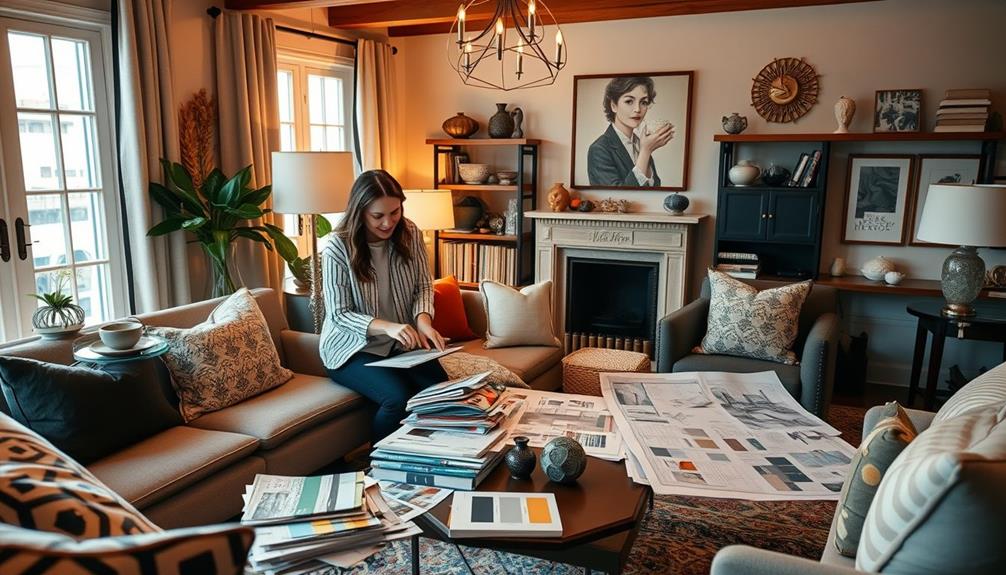
Working with a professional designer can be a game-changer for your interior design journey. They help you clarify your personal style by evaluating your preferences and lifestyle needs through initial consultations and quizzes. This collaboration guarantees that your vision for your home aligns with your actual needs, creating a space that truly represents you.
Designers utilize their expertise to curate a selection of furniture pieces and decor tailored to your unique taste, guaranteeing a cohesive look throughout your space. They can also offer valuable insights into layout changes and accent pieces that enhance both the functionality and aesthetics of your home.
With a professional by your side, you gain access to industry resources and product recommendations that streamline the decorating process. Personalized design services can transform your ideas into reality, making your home a true reflection of your personality and taste.
Instead of feeling overwhelmed by choices, you'll enjoy a more efficient and enjoyable decorating experience. By working with an expert, you'll not only elevate your space but also gain confidence in your design decisions. Don't hesitate to reach out; the right designer can make all the difference.
Create an Inspiration Board
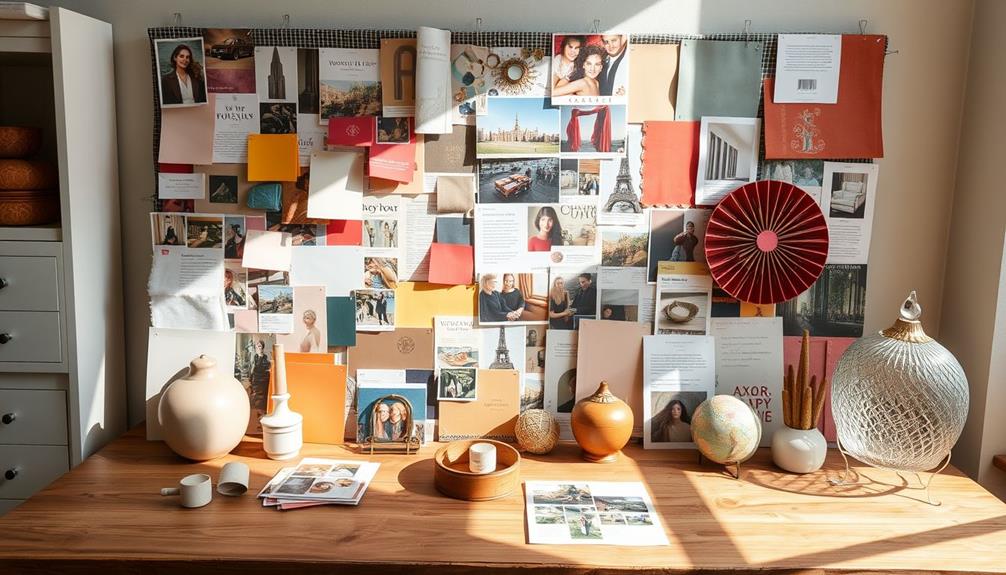
Creating an inspiration board is a fun and effective way to clarify your interior design style. By using platforms like Pinterest, you can collect images, colors, and textures that resonate with your personal aesthetic.
As you gather items, focus on recurring themes that can provide clues to your design preferences. Here are some tips to enhance your inspiration board:
- Identify color palettes that evoke positive emotions.
- Explore different furniture styles that catch your eye.
- Mix decor styles, like modern, traditional, bohemian, and industrial.
- Analyze your existing home items to see what you love or dislike.
- Regularly update your board to reflect your evolving tastes.
This process not only helps you pinpoint your unique style but also aids in decluttering and refining your design direction.
Conclusion
Now that you've revealed the secrets of your interior design style, get ready to transform your space into a masterpiece that even Picasso would envy! With your inspiration board and newfound knowledge, you'll be the envy of your friends, and your home will practically throw a party for every guest. So go ahead, mix those styles, channel your inner designer, and watch as your home evolves into a breathtaking wonderland that'll make magazines weep with joy!









